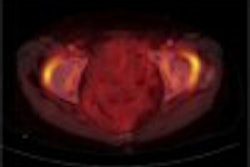CHICAGO - The use of CT screening to find early lung cancers in high-risk individuals not only discovers the lesions at an early stage of development but also appears to be able to perform the task in a cost-effective manner.
"More than 80% of the diagnosed lung cancers we found in initial and repeat CT screening were Stage 1," said Dr. Claudia Henschke, professor of radiology and division chief of chest imaging at New York Hospital/Cornell Medical Center.
In a report on the 10-year results of the Early Lung Cancer Action Project (ELCAP), Henschke said 28 patients were found to have cancer. Of those patients who chose to have the cancer surgically removed, more than 90% were alive eight years later. Only three patients chose not to undergo surgery, and all three died in about three years.
Multiple annual CT screenings were performed on 2,968 high-risk subjects, Henschke said. The subjects had smoked the equivalent of one pack of cigarettes a day for at least 10 years and were over age 60. ELCAP was conducted at two New York hospitals.
The CT screens cost $200-$400 each. Cost-effectiveness calculations indicate that a population-based screening program would cost $2,500 for each patient year of life saved, Henschke said. That is far below estimates of the threshold cost-effectiveness that, in the United States, is about $50,000 per patient year of life saved.
Henschke reported a series of findings from ELCAP and its sister studies, including one based on patients from 8 New York hospitals and another involving 34 sites internationally. The screening has turned up 79 lung cancers, most in their earliest and most curable stage. Overall, around 18,000 subjects have taken part in the screening program.
Among the surprising findings of the study, Henschke said, was that women smokers are more than twice as likely to develop lung cancer as men are. She said researchers are investigating why women should be more susceptible to smoking, but definite answers are not yet known.
Older age also increased risk, as does the pack-years one smokes. The risk of cancer is higher if a nodule is spotted on CT; if that nodule is part-solid the risk of malignancy increases 19 times.
Among the subjects who had quit smoking, the risk of cancer decreased by 36%. "But unlike heart disease," Henschke said, "the risk of lung cancer remains elevated in patients who have quit smoking for at least 20 years."
Henschke said preliminary data from the New York ELCAP and the international ELCAP indicate their detection of early cancers is similar to the initial study. "CT screening can help save lives," she said. "Without it, about 85% of lung cancers that physicians diagnose are more advanced."
By Edward SusmanAuntMinnie.com contributing writer
December 1, 2003
Copyright © 2003 AuntMinnie.com




















